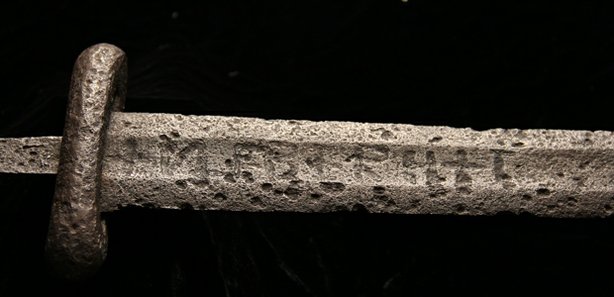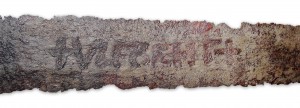More than 170 swords bearing the “ULFBERHT” inscription have been found in several European countries, mainly in Norway, Finland, Estonia and Latvia. There are fewer of them in the Christian Kingdoms. The inscription is written in Latin. Their timing goes from the 9th to the 11th century.
This swords are so special because of the technology with which they were manufactured. To make them, they had to heat the metal with a temperature of 3000 ºF – about 1648 ºC. This procedure eliminated most of the impurities of the metal, making the sword stronger. Also they have about three times the amount of carbon than any other type of sword, this also made the blade stronger but more flexible. This procedure assured that this were the strongest swords in the Middle Ages.
This is all we can know for sure about the swords, beside these facts we are left only with more questions that can hardly be answered.
First of all, we have to ask how did they manage to make these swords? We already know the procedure, but how did they manage to heat the blade at such high temperature. We only know of technologies like that can get results like this after the Industrial Revolution, this means that the manufacturer got ahead of its time by more than 800 years.
Why is the inscription in Latin? This swords are often related to the Vikings, and not without reason. Most of them were found in Viking Europe, specially in Viking burials. So why isn’t the inscription written in runes? Maybe this means that they weren’t made by Vikings, but bought or stolen by them.
This leads to the question, who really were the manufacturers? Some say that the Vikings made the blades. The metal was brought from Central Asia, were it was produced, to the Baltic. There’s a trade route that connects Northern Europe with the Caspian sea, named the Volga route. This route was used from the end of the 8th century and fell into disuse by the 11th century, this dates match perfectly with the production of this swords.
After a chemical research, though, we cannot be so sure that is the correct answer. Robert Lehmann explains that the chemical composition points to Germany. This makes sense, considering the Latin inscription. The name Ulfberht is also a Frankish name. We also know about monasteries that manufactured weapons in this places and the usage of a “+” at the beginning of the inscription can also pinpoint to their creation by monks. But since there’s no evidence of that name in any of the Frankish monasteries’ records we cannot jump into any conclusion.
So, why do we find a larger number of blades in Pagan Europe context? Maybe because Vikings were buried with their possessions, including their blades, while Christians didn’t do that. So with time, the blades got lost. This can explain why in the Christian regions they were found out of every context, like river beds.
Finally we have to ask, what does Ulfberht means? Is it the name of the manufacturer? Hardly, since they were produced for more than 200 years. A brand? Maybe that was who they called that type of blade, or the metal they used. We can only guess.
The only thing we know is that these swords remain a mystery.

